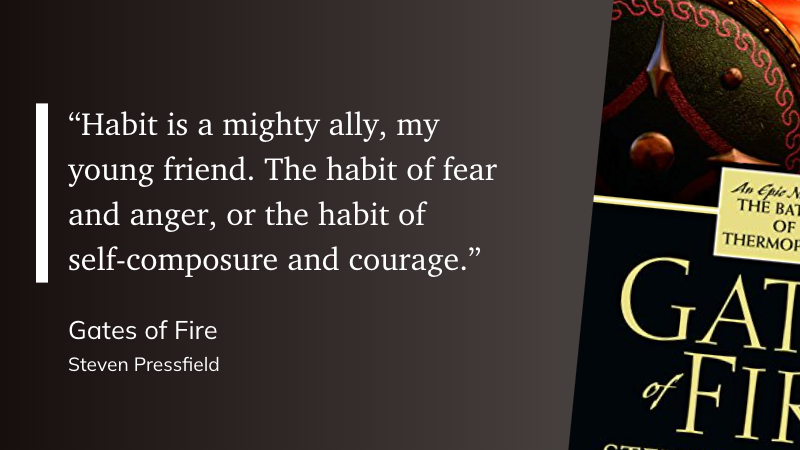
Greetings Starfighters,
I’m certain that the only way we can change our schools is to focus on creating authentic student learning experiences. The more I read and watch in the education world only solidifies that belief.
If we’re not focused on authentic learning, we betray the sacred trust given to us by families when they give us their very best every day. They want more for their kids.
They want more than scripted learning stuck in an industrial design that stifles creativity and individuality.
They want their kids to be their authentic selves. And that must be our commitment, our moral and ethical duty as educators.
If it’s not, we’re wasting our time.
Quote of the Day
“Habit is a mighty ally, my young friend. The habit of fear and anger, or the habit of self-composure and courage.” (Steven Pressfield, Gates of Fire)

Musical Interlude
Foxes and Fossils, one of my favorite YouTube cover bands, published a cover of Paul Simon’s “America,” and it is everything.
Have I mentioned that Paul Simon is one of my favorite musicians? No?
Long Read of the Day
I’m going to guess that most of us aren’t too worried about having clean clothes to wear when we leave the house (we’re not going to talk about summertime teacher lounging around the house wear…). However, clean clothes are a luxury for some students, and not having them can keep them away from school.
For most students, having clean clothes to wear to school is not a problem.
But for many families at 112th St. S.T.E.A.M. Academy in Watts, a pair of clean pants and a shirt is such a struggle that it has become one of the main contributors to chronic absenteeism, which is when students miss 15 or more days or classes…
In May, the school received a new washing machine and [dryer from the Rams NFL football team](https://abc7.com/post/la-rams-donate-washers-dryers-schools-resourced-communities/14867499/#:~:text=The Rams and Pacsun will,to 20 under-resourced schools.) and the Think Watts Foundation; along with $2 million in clothing to schools serving low income students. Earlier this year, LAUSD also announced a mobile laundry service for homeless students as part of the district’s attempt to combat chronic absenteeism.
Hernandez hopes the machines will ease the pressure on parents and make it easier for students to return to school.
Video of the Day
In this webinar, experts discussed what whole child design looks like and what it means for broader systems change. Local education leaders provided lessons learned from their whole child design efforts and discussed how state policy can accelerate or impede these efforts.
Final Thoughts
I talk about authentic learning experiences all the time—maybe too much, but it’s kind of my thing. We don’t have enough authentic learning experiences in our schools, but what is more concerning is that we don’t let our students be their authentic selves very much.
We put them in boxes of grade levels, achievement, lunch groups, pathways, etc., and fully expect them to thrive. There’s nothing authentic or personal about much of what we deem important in education.
Before we can see better outcomes for our students, we have to let them be authentic to what is inside them. I’m stuck on Steven Pressfield’s idea that the artistic journey is the “passage by which we re-invent ourselves as ourselves.”
We need to give our students a passage to reinvent themselves by discovering who they really are. It wouldn’t hurt to give our teachers the same experience, either.
The Eclectic Educator is a free resource for everyone passionate about education and creativity. If you enjoy the content and want to support the newsletter, consider becoming a paid subscriber. Your support helps keep the insights and inspiration coming!










